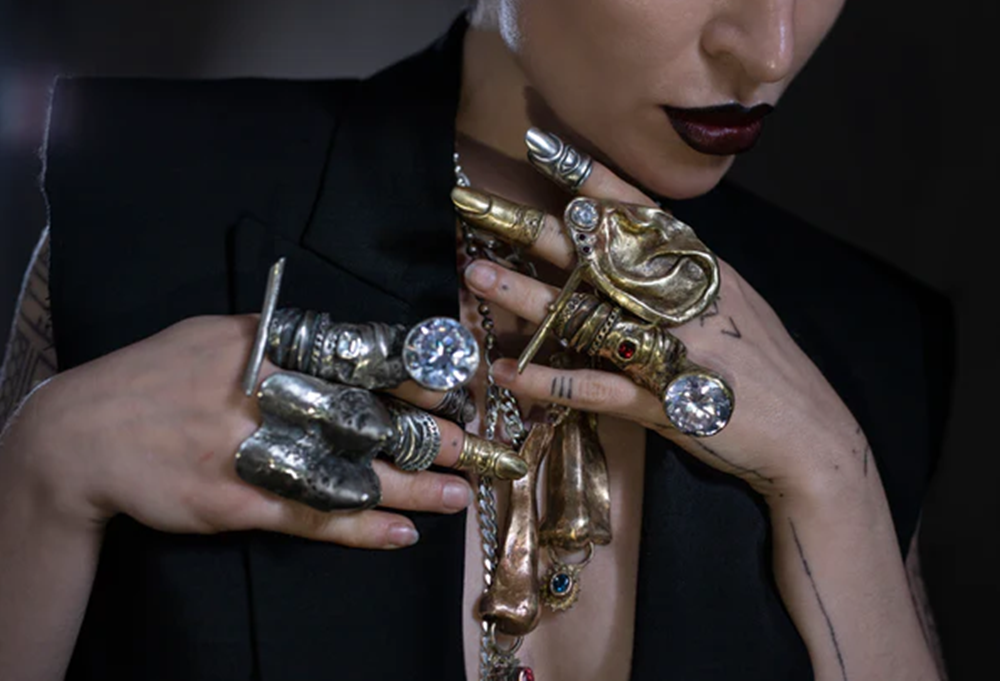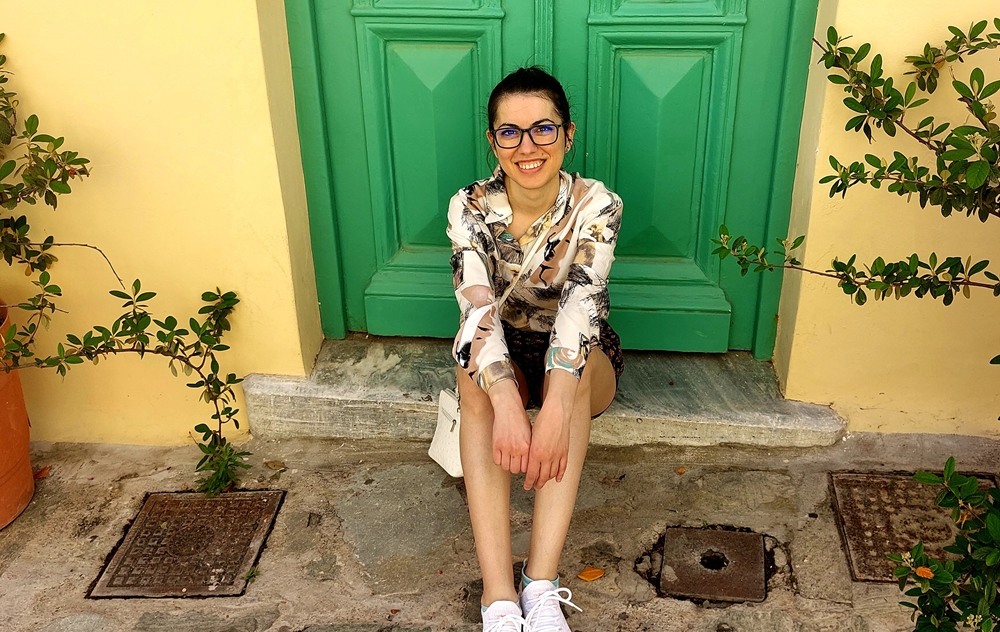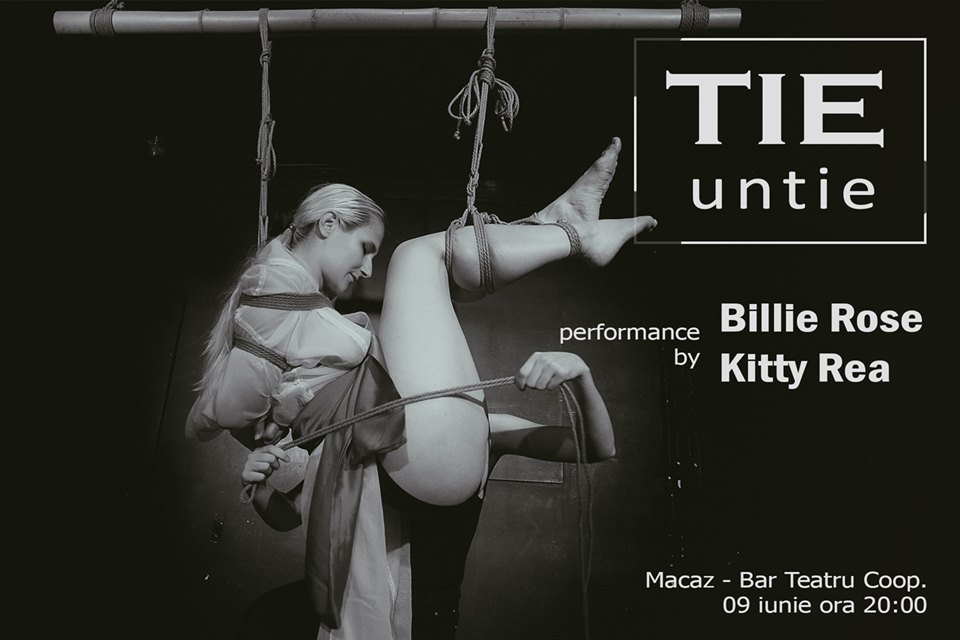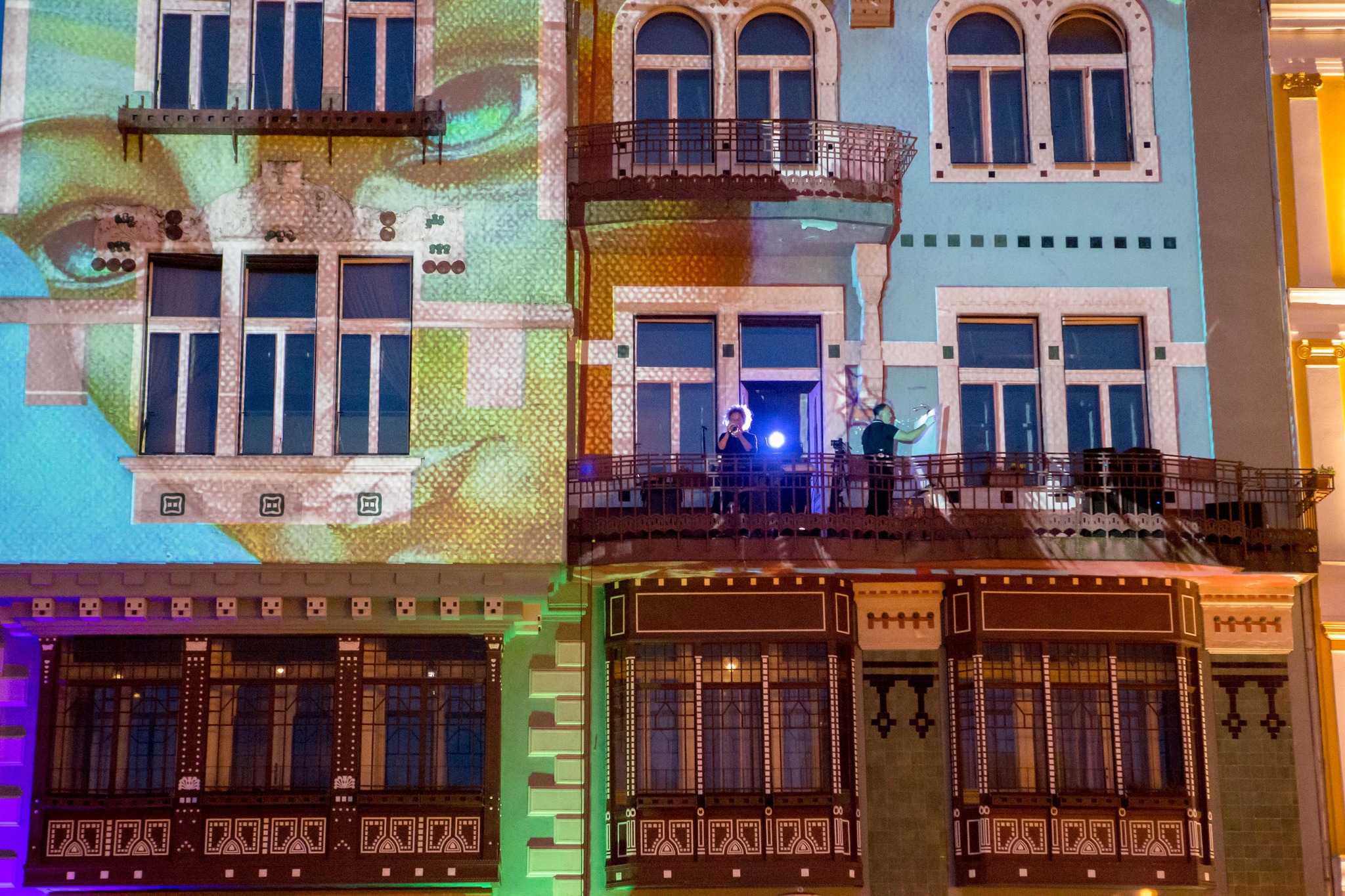RAW FLOW is an independent jewelry label founded in Poland by Marianna Klimaszka. As a result of her experiences studying jewelry school and studying sculpture, the artist is now able to create bold, contemporary pieces that are based on the concept of “entropy, transformation, morphing, and breaking the rules.”
From oversized rings and earrings to necklaces adorned with intricate designs, RAW FLOW is about more than just aesthetics. It’s about making a statement and telling a story. Among the handmade pieces are abstract designs as well as avant-garde pieces infused with an array of vibrant stones. As a whole, RAW FLOW is about accepting one’s authentic self while refusing to conform to societal expectations. Statement pieces serve as a visual representation of the wearer’s tastes, personality, and values, and are an extension of their identity.
Hello Marianna! Thank you for accepting our invitation and please let us know more about yourself. First things off, what first led you in the direction of making jewelry?
Thank you, Nicoleta, for inviting me to this conversation. I have been surrounded by jewelry since I was a child. My mother and grandmother had a lot of it. My mother’s brother brought us jewelry from his travels around the world. I think this is the seed that started to sprout over time. Later I graduated from jewelry school. However, in those years in Poland, I did not see myself in this profession. I was looking for other ways to express myself. As a result, a dozen or so years after graduating from school, after studying several fields of study (including sculpture) and working in various professions, I decided to return to creating jewelry.
Given the state of mainstream culture that permeates how we consume media, how would you introduce your work to a stranger?
Visual game, sculptural jewelry revolving around the theme of entropy, transformation, morphing, and breaking rules. It takes you to another reality.
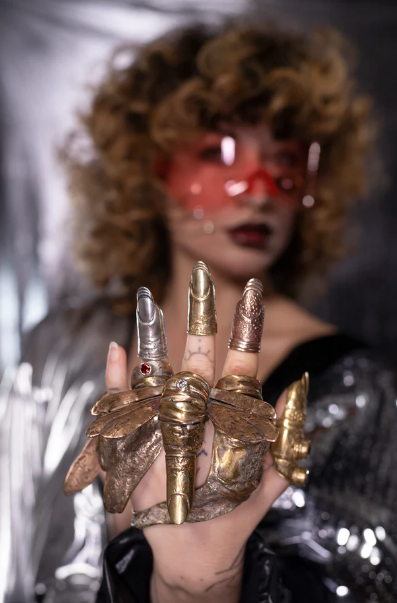
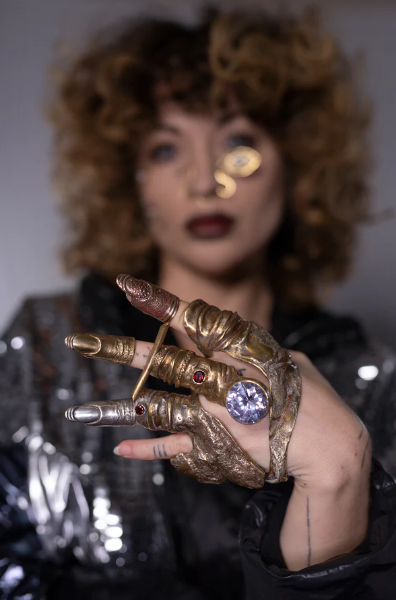


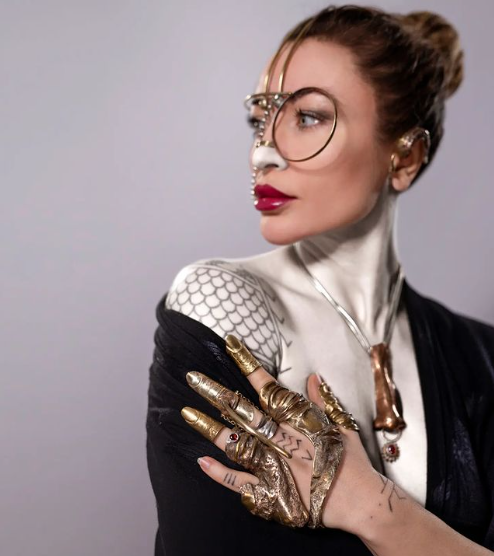
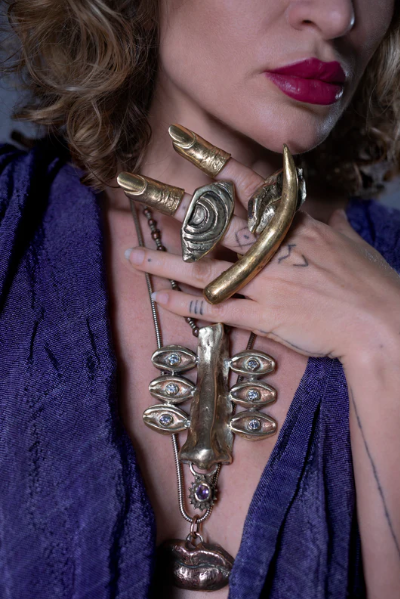
Prior to starting a new project and according to the diverse nature of your work, what type of research do you do and why?
There is one vision, the whole, that I strive for. Each piece of jewelry is a fragment of it. I allow myself freedom in the order in which I build these elements and to adapt in visual matters, following changes in my mental and intellectual development. This whole is supported by knowledge acquired over years of education. I try to expand my knowledge and skills constantly.
Following the flow of composition, curves, and elements to design jewelry, how do you balance aesthetics and functionality?
At first, I always wear my jewelry and test it for comfort. I am building a frame based on the anatomy of the body and a sculpture on it. If I find something not comfortable enough, I change it. I will not release jewelry that I find uncomfortable to wear. However, comfort is also subjective.
What are the differences between handmade jewels and industrial jewels? Is it difficult to communicate that to people?
I feel insufficiently competent to educate on this topic. Someone has to extract natural stones, which may result in environmental degradation, exploitation of people working in the extraction process, and support for war activities (e.g. “blood diamonds”). Laboratory stones are made in laboratories by chemists. Their structure is often impossible to distinguish from natural ones under a microscope. In their case, there is a greater chance that the manufacturing process caused less damage, that the activity is legal, that employees are properly paid, and that working conditions are safe.
From an industrial design perspective, what are your vital tools, resources, and methods for you during the design process?
I use many sculpting tools to create my jewelry – spatulas, chisels, knives. Some of them were bought for me by my grandfather years ago. I also use his old tools that I found in the garage. My favorite is a large triangular metal file that I think might be older than me. Some pieces of jewelry were first sculpted in clay or modeling clay, and some directly in metal. I generally mix methods. Rather, most of the methods I learned from sculpture studies rather than jewelry school.
If you had to pick one artist or studio jeweler from the last century, who most influenced your designs?
I look for inspiration in sculptures rather than in jewelry so I will point to Magdalena Abakanowicz. I have loved her work since I was a child. Sometimes I cheat on her a little and have crushes on other artists, but I always come back to her in the end. Her aesthetics, intellectual art, and subject matter have had a huge impact on me. I feel an emotional connection to her art and her story. We come from the same country. Some elements of our family’s history are similar. Very often, when I read her statements and listen to interviews with her, I think “I would say the same, I feel the same.” In fact, I always cry at her exhibitions, which is a bit tiring after so many years. (laughs)
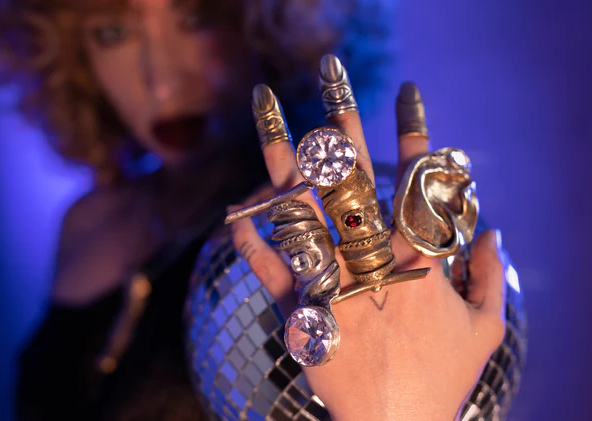
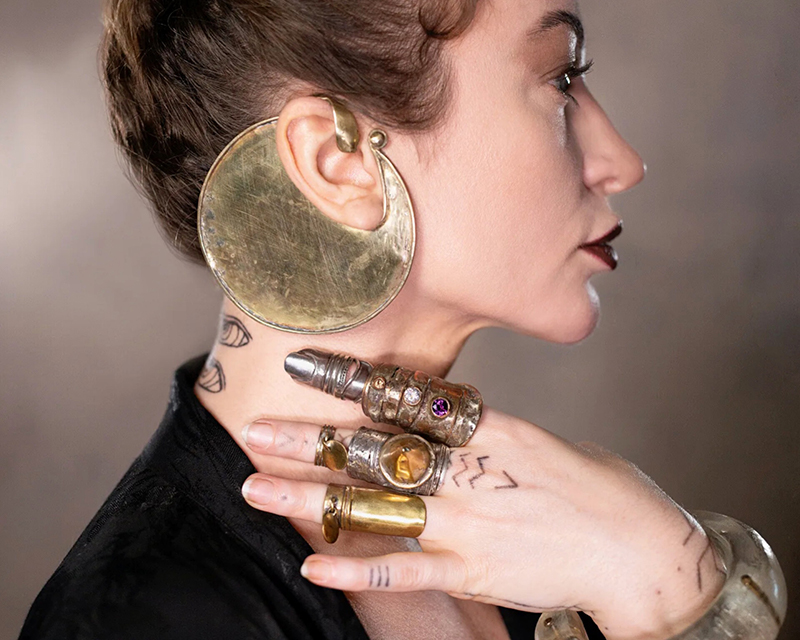
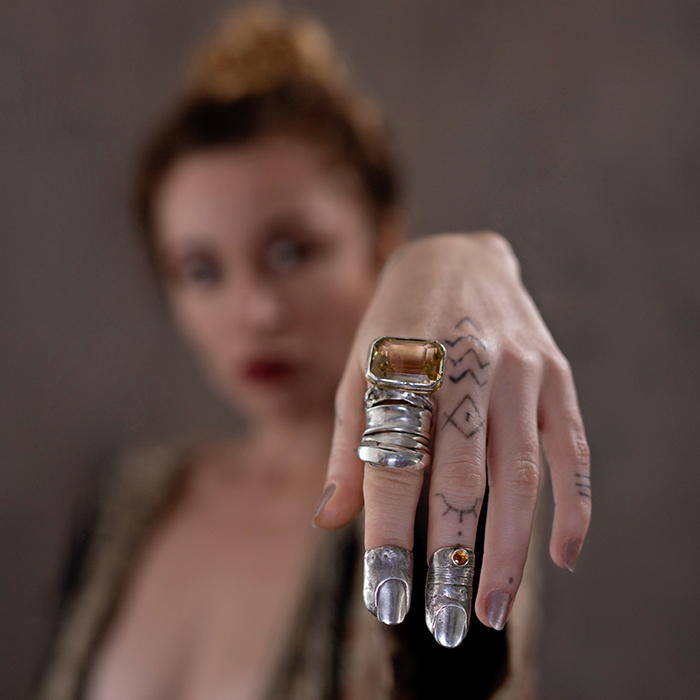
Would you say your jewelry appeals to creative thinkers, people looking to defy the status quo?
Yes. And to the most stubborn ones.
There are many descriptions of the ideal state of mind for being creative. What is it like for you? What supports this ideal state of mind and what are the distractions? Are there strategies to enter this state more easily?
When I was creating the name for my jewelry, Raw Flow, one word was supposed to describe the jewelry (Raw), and the other was the method of creation (Flow). Here I will refer to my answer to your earlier question. I have a comprehensive vision that I strive for, but I don’t want it to be completely planned. There must be a magical element to it and that is flow. I will refer here to Mihály Csíkszentmihályi’s concept of the Flow state. I better not put it into words, he’s already done it beautifully. Staying in the process is so liberating that you don’t want it to end. To enter Flow, I need silence, to surround myself with plants, and to focus on myself. I’m easily distracted by noise.
Thinking about your evolution, what are some developments in you – whether it’s in your jewelry, your energy, or the way you work – that you’ve seen real change since your first piece of jewelry?
This is the hardest question you’ve asked me. There was a time when my approach to creation evolved significantly. Previously, jewelry was more of a hobby of mine, a way to explore myself, and then it became my salvation. The political situation in my country began to scare me more and more. This was also compounded by my mother’s incurable illness, which resulted in her death. I felt complete helplessness. Creating helped me get through it. It was this fragment of reality on which I had real influence. I could control it, I set the rules. My jewelry started to grow, to shine more, and I changed the way I photographed it. I also had support from my husband at that time. I could have fallen into my world thanks to that. If you go to my Instagram, you could cut it into two parts, some in 2021. You can see where the changes started.
What is next for you?
I learned to control my emotions by creating jewelry. I breathe through creation. I want to develop further in this direction. I feel it is an inseparable part of my personality.
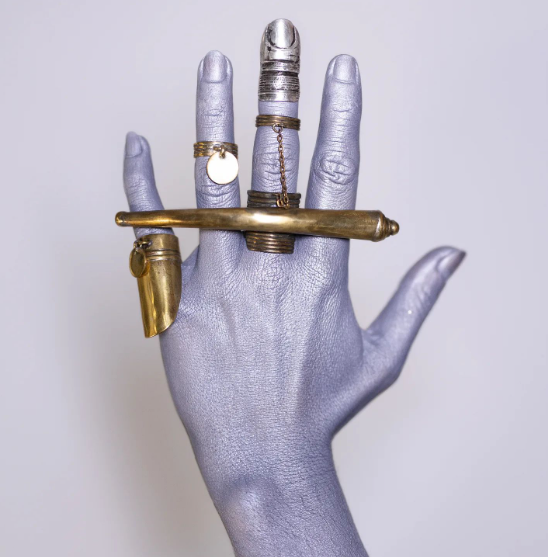
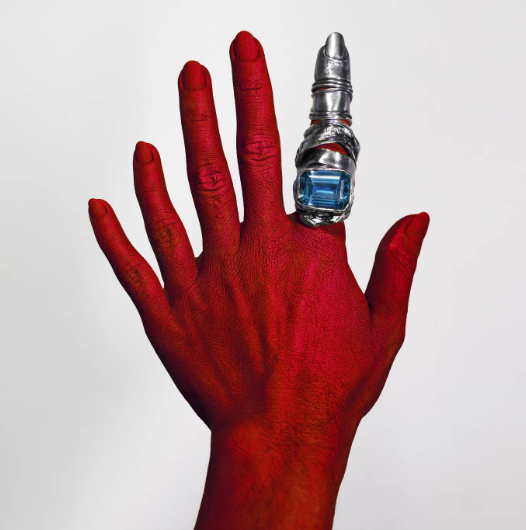
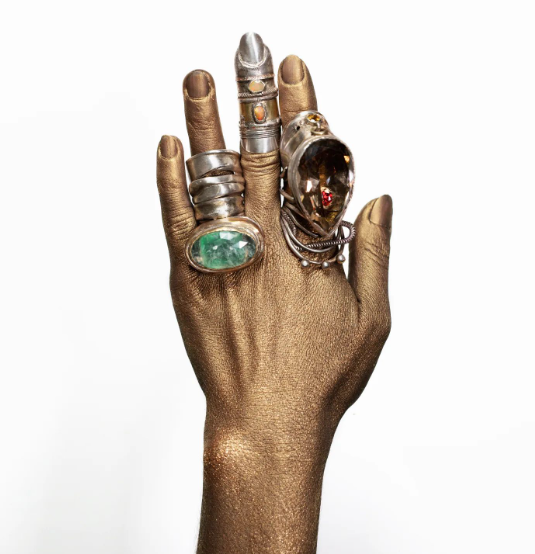

Follow RAW FLOW on:
Instagram | Website
All copyrights belong to RAW FLOW
Nicoleta Raicu
Latest posts by Nicoleta Raicu (see all)
- From Cowboys to Soundscapes: The Vibrant World of Wanheda’s “Dusty Trails” - November 22, 2024
- On Yvonne’s Debut Album: A Journey of Empowerment & Emotion - November 21, 2024
- ‘High Life’: Larry Mossburg’s Celebration of Simple Joys in His Latest Single - November 19, 2024
